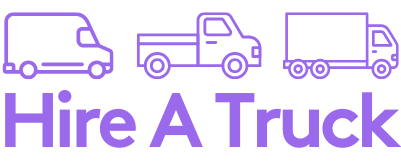Know What You Need Before You Hire
Whether you’re hauling construction material, transporting stock, or moving equipment between job sites, choosing the right truck class is crucial. With so many different types of trucks available, it’s easy to get lost in the terminology — especially when it comes to light-duty vs. heavy-duty trucks.
In this guide, we’ll help you understand the main differences between truck classes, which businesses typically use them, and what Hire a Truck can offer for each category.
GVM & Payload: A Crucial Distinction
A truck’s capacity isn’t just about its physical size; it’s about its weight limits. Understanding these terms is essential to staying legal and safe.
- GVM (Gross Vehicle Mass): This is the maximum legal weight of the vehicle when it’s fully loaded. It’s a non-negotiable figure set by the manufacturer. The GVM includes the vehicle’s own weight, the driver and passengers, fuel, and all the cargo.
- Payload: This is the actual carrying capacity of the truck. It’s calculated by subtracting the truck’s “kerb weight” (the weight of the vehicle with a full tank of fuel) from its GVM. It’s important to remember that the weight of the driver, passengers, and any accessories you’ve added (like a trolley or a towbar) all count towards your payload.
🚚 Light-Duty Trucks: Versatility and Accessibility
Light-duty trucks are perfect for small businesses, event planners, retailers, and tradespeople who need a vehicle that’s bigger than a van, but still manageable to drive and park in urban environments.
Key Features & Specs:
- GVM: Typically up to 4.5 tonnes, allowing for a generous payload of up to 2 tonnes.
- Licence: Most can be driven with a standard Australian car licence (Class C).
- Fuel Economy: Expect to get around 16–18 L/100km, depending on the load and conditions.
- Ideal for: Local deliveries, furniture or office relocations, event logistics, and trade work.
Common Light-Duty Truck Types:
- Pantech (Box) Trucks: The classic enclosed truck. Offers a secure, weather-protected space for fragile items like furniture, AV equipment, or stock.
- Flatbed & Tray-Backs: A versatile open platform, great for transporting building materials, landscaping supplies, or any bulky items that can be secured with ratchet straps.
- Tail-Lift Trucks: A game-changer for solo drivers or small crews, the hydraulic tail-lift makes loading and unloading heavy items like whitegoods, pallets, or large display stands a breeze.
🏗 Medium- & Heavy-Duty Trucks: Power and Specialisation
Heavy-duty trucks are the muscle of the transport industry. They’re built for demanding tasks like transporting building materials, towing machinery, or handling bulk deliveries across long distances.
Key Features & Specs:
- GVM: From 8 tonnes and up, with payloads often exceeding 5 tonnes.
- Licence: Requires a specific heavy vehicle licence, depending on the truck’s GVM and number of axles.
- Fuel Economy: Expect to get around 25–30 L/100km, reflecting their greater power and capacity.
- Ideal for: Construction companies, logistics firms, large-scale landscaping, and industrial transport.
Heavy-Duty Truck Types:
- Tipper Trucks: Essential for construction, landscaping, and demolition, a tipper truck can automatically unload bulk materials like soil, sand, or rubble with its hydraulic tipping tray.
- Curtain Siders: Combines the weather protection of a pantech with the loading flexibility of a flatbed. The curtains can be pulled back, allowing forklifts to load pallets from the side, making them perfect for distribution centres and multi-drop deliveries. A typical 10-pallet rigid curtainsider has a payload of up to 12 tonnes.
- Crane Trucks: For businesses that need to load and unload heavy, non-palletised items like machinery or building trusses without a forklift on-site. The onboard crane provides incredible autonomy but reduces the truck’s overall payload.
⚖️ Demystifying Licence Classes (Australia)
The class of licence required depends on the truck’s GVM, not its size.
| Licence Class | GVM (Gross Vehicle Mass) | Common Vehicles |
| C (Car) | Up to 4.5 tonnes | Pantechs, flatbed utes, and some vans. |
| LR (Light Rigid) | 4.5 to 8 tonnes | Small trucks and buses. A key step-up for growing businesses. |
| MR (Medium Rigid) | Over 8 tonnes with 2 axles | Medium-sized delivery and general freight trucks. |
| HR (Heavy Rigid) | Over 8 tonnes with 3 or more axles | Large, heavy-duty trucks and articulated buses. |
💰 Cost-Benefit Analysis: One Big Truck or Two Small Ones?
This is a common question for logistics managers. While a heavy-duty truck has a higher daily hire rate and burns more fuel, it can be the more cost-effective choice in the long run.
- Labour Costs: A single large truck can do the job of two light-duty trucks in one trip, cutting your labour costs in half for that job.
- Time & Efficiency: It saves valuable time by eliminating a second round trip, which also reduces the risk of traffic delays or missed deadlines.
- Total Project Costs: When you factor in the wages for a second driver, the time spent on two trips, and the fuel for both vehicles, a single heavy-duty truck often works out to be a cheaper and more efficient solution for a large job.
🚨 Legal Obligations: The Chain of Responsibility (CoR)
Under Australian law, everyone involved in the transport supply chain is responsible for safety and compliance. This isn’t just a concern for large companies. Small businesses must be aware of their duties.
- Shared Responsibility: This means that the driver, the business owner, the person who packed the truck, and the person who scheduled the delivery can all be held legally accountable for a breach of road transport law.
- Overloading: Exceeding your truck’s GVM is a serious offence that can lead to substantial fines for your business. Fines can exceed $5,000 for a minor breach and up to $15,000 for a severe one, with an additional penalty of five times the fine for a body corporate.
- Due Diligence: The law requires you to take “reasonable steps” to prevent breaches. This includes having formal procedures in place for weighing loads, conducting pre-start inspections, and training staff.
📋 Pre-Start Inspection Checklist
Before you drive off, a comprehensive pre-start inspection is essential. Use this checklist to ensure the vehicle is safe and compliant.
- Inside the Cab: Check that the horn, wipers, washers, and all lights are working. Ensure your mirrors are clean and correctly adjusted, and that no warning lights are on.
- Exterior Walk-Around: Check all tyres for sufficient pressure and damage. Look for any fluid leaks. Check all external lights, including headlights, brake lights, and indicators, and ensure all lenses are clean.
- Load Security: Confirm that all straps and securing equipment are in place and that the load has not shifted.
- Tail-Lift Check: Run the tail-lift through its full range of motion. Listen for any unusual noises and check for any hydraulic leaks.
🔒 Best Practices for Load Restraint
Proper load restraint is a legal requirement and a safety imperative. The law requires you to secure a load so that it won’t shift, move, or fall off the vehicle under normal driving conditions, including braking, cornering, and acceleration.
- Tie-Downs: Use ratchet straps or chains to secure the load. A standard ratchet strap can withstand a force of 0.8g forward, 0.5g sideways, and 0.5g rearward.
- Blocking: Position the load against a sturdy barrier like the truck’s headboard or side walls.
- Increase Friction: Place anti-slip mats or friction matting between the load and the truck’s floor to stop it from sliding.
- Inspect Your Gear: Always check your straps, chains, and other restraint equipment for signs of wear and tear before each use.
📄 The Rental Agreement: What to Look For
Before you sign on the dotted line, it’s vital to understand the terms and conditions of your rental agreement.
- Standard Excess vs. Excess Reduction: The standard excess is the maximum amount you are liable to pay for any damage or theft, which can be thousands of dollars. Excess reduction is an optional add-on that significantly lowers this liability, giving you peace of mind.
- Authorised Drivers: Only the drivers listed on the agreement are permitted to operate the truck. You may need to provide their licence details in advance.
- Prohibited Use: Be aware of any restrictions, such as using the vehicle on unsealed roads, for towing, or for illegal purposes.
- Fuel Policy: Most agreements will require you to return the truck with the same amount of fuel it had when you collected it. Failure to do so will result in a refuelling charge.
🔨 Essential Accessories for a Smooth Job
A great truck is just the start. The right accessories can make the difference between a difficult job and a smooth one.
- Hand Trolleys: An indispensable tool for moving heavy or bulky items like appliances, boxes, or furniture.
- Furniture Blankets & Pads: These provide critical protection for your goods, preventing scratches and scuffs during transit.
- Ratchet Straps: Your primary tool for load restraint. Ensure you have a sufficient number for your load and that they are in good condition.
🏢 How Hire a Truck Helps
At Hire a Truck, we simplify commercial truck rental with:
- ✅ A wide fleet of light & heavy-duty vehicles
- ✅ Daily, weekly, or long-term hire
- ✅ Vehicles available for C, LR, MR, and HR licence holders
- ✅ Fleet solutions for businesses
- ✅ Locations across Brisbane, Gold Coast, Sydney, and Melbourne
👉 See our full truck range or request a quote today.



